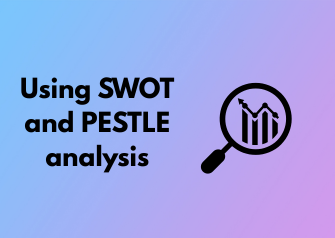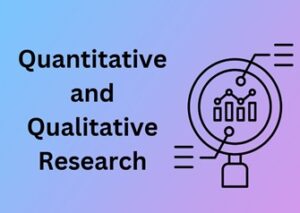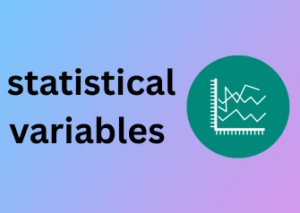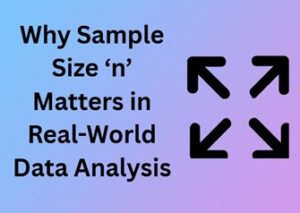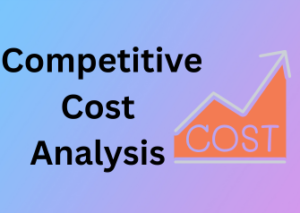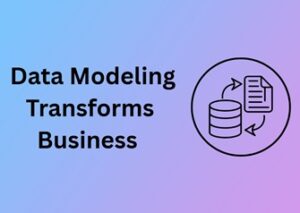Ever wondered why combining tools can sometimes result in better outcomes? Think of it this way: chocolate is great, peanut butter is wonderful—and together, magical! This same principle applies when you bring SWOT and PESTLE analyses into one strategic brainstorming session. By weaving their unique strengths together, you create a more comprehensive view of your business environment and its potential.
So, let’s take a moment to go back to basics. SWOT and PESTLE are both powerful frameworks when used individually, but they focus on entirely different perspectives. SWOT (Strengths, Weaknesses, Opportunities, Threats) dives into internal and external factors that affect an organization. It’s all about your specific capabilities. In contrast, PESTLE (Political, Economic, Sociocultural, Technological, Legal, and Environmental) zooms out to analyze broader external forces shaping your operating environment. It’s like using two lenses—close-up and wide-angle—for the same picture.
The reason these two frameworks work so well in tandem lies in how they complement each other. SWOT encourages introspection: What are we good at? Where can we improve? Meanwhile, PESTLE forces you to look at the bigger picture: What’s happening in our industry, economy, and society that could shift the way we work? Alone, each framework gives you critical insights. Together, they help bridge the gap between your internal reality and the world around you.

Making Strategy More Holistic
It’s easy to fall into the trap of either being too focused on what’s happening internally (through SWOT alone) or getting overwhelmed by external factors (through PESTLE analysis). However, strategy should never exist in silos—business challenges and opportunities are always multifaceted. Both frameworks, when combined, add layers of depth to your decision-making process.
For example, consider a company that has strong manufacturing capabilities (a SWOT strength). That’s great, but what if new environmental regulations are about to make its current processes unsustainable (a PESTLE environmental factor)? Unless these frameworks are used together, this connection could be missed—and a promising strategy derailed before it even begins. Working with both tools allows you to understand not just “what you’re good at,” but also “how favorable the market is for leveraging those strengths.”
The Secret Sauce: Balance and Structure
The real beauty of combining SWOT and PESTLE is that they bring structure and balance to your strategy-building process. SWOT is action-oriented—it gets you brainstorming about actionable next steps based on your internal metrics. On the other hand, PESTLE provides the context to validate those steps or highlight potential risks lurking in the external environment.
- SWOT asks: What do we do well? Where are we lacking?
- PESTLE asks: What trends, regulations, or shifts in society could affect what we do?
By addressing both questions together, your strategy becomes more thoughtful, adaptable, and, most importantly, realistic. After all, your strengths can only work in your favor when they align with external dynamics, right?
So, whether you’re a seasoned strategist or just starting to familiarize yourself with these concepts, remember: SWOT and PESTLE don’t just coexist—they thrive when used together. The next steps are about how these tools integrate seamlessly (spoiler alert: that’s what the rest of this discussion is all about!). But for now, let’s appreciate why even the foundation of combining these analyses is such a game-changer.
Connecting Internal Strengths to Broader External Forces
Ever feel like your company has so much potential but needs a little help navigating the world outside its walls? That’s where combining internal strengths with external forces comes into play! By aligning what you do best with what the broader environment demands or offers, you create strategies that are not just effective but also resilient. Let’s break this down step by step, keeping it simple but insightful.
Understanding Internal Strengths
First, let’s shine a spotlight on your company’s strengths. These are your unique capabilities, resources, or advantages that set you apart from the competition. Think of things like:
- An innovative product that customers rave about
- Highly skilled employees who bring expertise to the table
- A strong brand reputation or superior customer service
SWOT analysis, short for Strengths, Weaknesses, Opportunities, and Threats, excels in identifying these internal factors. However, strengths don’t operate in a vacuum. To really make them work hard for you, you have to see how they interact with the world at large. That’s where PESTLE analysis steps in.
Diving into External Forces
PESTLE (Political, Economic, Social, Technological, Legal, and Environmental) analysis is all about scoping out the wider environment, giving you an understanding of external forces that could influence your business. For instance:
- What political changes might create new policies that affect your supply chain?
- Is growing environmental awareness nudging customers toward eco-friendly products?
- How advanced is the technology landscape – do you need to stay on top of AI trends?
By examining these factors, you identify opportunities to tackle or obstacles to overcome, which is crucial for your strategy. The magic happens when you link your inner game (your strengths) to what’s happening externally.
Making the Connection: How It Works
So, how do you marry these two frameworks together in a meaningful way? Here’s a step-by-step thought process to make those connections:
- Start with Internal Strengths: For example, let’s say your company has superb digital marketing skills.
- Identify Relevant External Forces: Using PESTLE, you might spot a trend showing that younger audiences are consuming more content on TikTok rather than traditional platforms.
- Align and Adapt: Take that marketing expertise (strength) and tailor it toward TikTok campaigns. You’re leveraging your capability to respond directly to external trends.
- Rinse and Repeat: Go back to your other strengths and see how they can connect with wider forces, from tackling regulatory shifts to capitalizing on emerging market needs.

When SWOT Meets PESTLE: A Step-by-Step Approach
Combining SWOT and PESTLE analysis may sound like a mouthful at first, but don’t worry—we’ll break it down in a simple, step-by-step approach. When you pair these two powerful frameworks, you get a complete picture of your business environment. It’s like finding the perfect recipe: each ingredient (or analysis) plays a role, but together, they create something extraordinary. Let’s explore how you can make it work seamlessly.
1. Start with PESTLE Analysis
Begin by examining the external environment around your business using PESTLE. This framework enables you to identify broader forces that could affect your strategy. Look at:
- Political: Are there new regulations or political changes impacting your industry?
- Economic: How are market trends, inflation, or interest rates shaping consumer behavior?
- Social: What cultural or demographic shifts are relevant to your offerings?
- Technological: Are emerging technologies opening opportunities or changing the playing field?
- Legal: Could changes in laws create risks or advantages for your business?
- Environmental: Is sustainability becoming a competitive advantage?
The goal here is to capture a detailed understanding of the external landscape that can both influence and threaten your market position.
2. Conduct a SWOT Analysis
Once you grasp the external forces through PESTLE, it’s time to turn inward and list your strengths, weaknesses, opportunities, and threats. SWOT allows you to assess your internal capabilities and how well-equipped you are to respond to external conditions. For instance:
- Strengths: What does your company excel at? Consider resources, reputation, or unique skills.
- Weaknesses: Are there gaps in your processes, or areas where competitors outperform you?
- Opportunities: What trends or gaps in your industry could you exploit?
- Threats: Are market changes, new competitors, or external forces jeopardizing your success?
By aligning your SWOT analysis with the external forces identified in PESTLE, you start seeing connections. But we’re not done yet!
3. Create Connections Between PESTLE and SWOT
Here’s where the magic happens. Take the outputs of your PESTLE and SWOT analyses and ask questions like:
- How do political or economic shifts (PESTLE) threaten our internal weaknesses (SWOT)? For example, if your supply chain relies on international trade, how will new tariffs hurt you?
- Can we leverage our strengths to seize opportunities highlighted in PESTLE? If your strength is innovation, could advancing technologies in your field provide the perfect stage for new products?
- Do external social or environmental trends highlight gaps in our strategy? For example, if sustainability becomes a top consumer priority, are there weaknesses in your product line holding you back?
By mapping these relationships, you can start building a strategy that actively bridges internal and external factors rather than viewing them in isolation.
4. Prioritize and Strategize
Not all findings from your analysis will carry equal weight. Focus on prioritizing the most critical opportunities, threats, or mismatches between your business and external conditions. Ask yourself:
- What actions will deliver the highest return on investment?
- Which external risks require immediate attention?
- How can we align our overall vision with changes in the market?
This step ensures your strategy is both focused and actionable, avoiding the pitfall of trying to tackle everything at once.
5. Review and Adapt
Finally, remember that PESTLE and SWOT are dynamic tools. As external environments evolve and your business grows, revisit your analyses periodically to ensure your strategy remains relevant and effective.
By methodically blending PESTLE and SWOT, you gain a well-rounded approach to crafting strategies that are both comprehensive and responsive. Ready to give it a try? You’ll be amazed at the clarity it brings to even the most complex challenges!
Bridging Market Challenges with Tactical Opportunities
Let’s talk about something every business leader, marketer, or strategist encounters: market challenges. They’re tough, sure, but they don’t have to be roadblocks. In fact, when you combine the strengths of SWOT (Strengths, Weaknesses, Opportunities, Threats) and PESTLE (Political, Economic, Social, Technological, Legal, Environmental) analysis, you can transform these challenges into exciting opportunities. It’s like upgrading your problem-solving toolkit to tackle issues from every angle!
The Beauty of Bridging Challenges to Opportunities
Here’s the deal: challenges aren’t just there to slow you down. Often, they reveal overlooked opportunities hiding in plain sight. The trick is knowing where to look and how to connect dots. That’s where SWOT and PESTLE complement each other. By analyzing both the internal and external environment — and the way they influence one another — you can identify unexpected ways to meet market demands, outsmart competition, and thrive in uncertainty.
How to Turn Challenges into Actionable Goals
To show you how this works, here’s a simple framework to guide your thought process:
- Spot the Threats from Your SWOT Analysis: Are competitors gaining ground? Is there a decline in consumer demand? Identify those red flags that could derail your growth.
- Dig into External Forces Using PESTLE: Examine the external pressures influencing those threats. For instance, if consumer demand is slowing, is it tied to an economic downturn (E for Economic)? If competitors are growing, is there a new technological advancement they’ve adopted (T for Technological)?
- Connect the Dots: Now, consider how your internal strengths or weaknesses can align with those external forces. Is your business positioned to adapt to these changes? Are there untapped opportunities emerging from these challenges?
- Actionable Strategy: Once you’ve gathered insights, draft a strategy that bridges the gaps. Start small and test solutions, but keep the big picture in mind to ensure your actions align with long-term goals.
Practical Examples to Inspire You
Let’s say your SWOT analysis highlights a threat: declining sales due to shifting consumer priorities. By using the PESTLE framework, you might discover that this shift stems from increased awareness about environmental sustainability (E for Environmental). Here’s where opportunity strikes. Perhaps you can pivot to eco-friendly products or promote sustainable practices that align with your customers’ priorities. Suddenly, what seemed like a challenge becomes a new revenue stream.
Or consider a case where a competitor threatens your market share with tech-savvy solutions. Dive into the PESTLE framework to decode the technological trends driving this. Using your strengths, like your team’s innovative capabilities or a previously overlooked technical asset, you can leapfrog competitors by addressing gaps in the market.
Why an Opportunity-Seeker’s Mindset Matters
Shifting your perspective from “challenges are problems” to “challenges are springboards” is the hallmark of a smart strategist. Combining SWOT and PESTLE not only helps you see the big picture, but also equips you with actionable steps for navigating complex environments. Plus, it builds resilience — the kind you need in today’s fast-paced, ever-changing world.
Case Studies: Effective Strategy Building Through Combined Analysis
Understanding frameworks like SWOT (Strengths, Weaknesses, Opportunities, and Threats) and PESTLE (Political, Economic, Social, Technological, Legal, and Environmental factors) is one thing; applying them in real-world scenarios is where the magic happens. Let’s dive into how organizations have effectively combined these two tools to create strategies that truly work.
How Case Studies Illuminate Success
Sometimes, theory can feel abstract, but case studies bring it all to life. By looking at how businesses and teams have used SWOT and PESTLE together, we uncover valuable lessons that can be replicated or adapted to different contexts. Whether you’re a startup founder, an established business leader, or a consultant, this combined approach reveals actionable pathways to solving complex challenges.
1. Retail Success Story: Bridging Operational Strengths with External Factors
Consider a popular retail chain expanding into a new international market. They began their analysis with a SWOT assessment, identifying their core strengths—such as excellent supply chain management and strong brand loyalty. However, they also recognized internal weaknesses, like their limited understanding of cultural nuances in this new market.
When they paired this with PESTLE analysis, they uncovered valuable external forces at play. For example:
- Political: Trade restrictions and import duties could impact costs.
- Economic: The target market had strong GDP growth, signaling higher disposable income among consumers.
- Social: A growing trend toward sustainability created opportunities to market eco-friendly products.
- Technological: Digital payment adoption was high, and their app needed optimization for local payment systems.
Their combined analysis revealed overlapping opportunities: their supply chain could incorporate more eco-friendly options to align with sustainability trends, and their app could add local payment integration to meet technological expectations. Using this targeted approach, the retailer not only entered the market successfully but also strengthened their overall long-term strategy.
2. Tech Startup: Navigating Growth with Precision
A tech startup offering AI-driven analytics faced rapid growth. While their SWOT analysis highlighted strengths like innovative technology and a talented team, it also exposed weaknesses—namely, a lack of funding to scale operations.
By complementing this with a PESTLE assessment, they gained a deeper understanding of how external forces shaped their landscape:
- Legal: Data privacy regulations, like GDPR, could complicate their product offerings in Europe.
- Economic: Rising inflation prompted them to adjust pricing without alienating customers.
- Technological: The adoption of cloud computing provided an opportunity to integrate seamless cloud-based features.
The combination of these frameworks allowed them to prioritize initiatives, like tailoring products for compliance in heavily regulated markets, while simultaneously improving their scalability by securing partnerships with cloud service providers.
Why This Approach Works
The synergy between SWOT and PESTLE is undeniable. Together, they provide a holistic perspective—balancing what your business is capable of (internal factors from SWOT) with what the world demands (external factors from PESTLE).
But here’s the key takeaway: Too often, businesses get stuck in analysis paralysis. The winning approach involves focusing on actionable connections between what you can do well and what the world around you offers. When done right, this builds robust, forward-thinking strategies that are both resilient and adaptable.
Ready for Your Case Study Moment?
Case studies give us a clear roadmap: success isn’t just about collecting information; it’s about connecting the dots between internal strengths and external realities. The next time you approach a strategic challenge, think about pulling lessons from the combined power of SWOT and PESTLE—as proven time and time again in the world’s most effective strategies.
Avoiding Overlaps and Staying Focused in Dual Frameworks
So, you’re diving into the combined power of SWOT and PESTLE frameworks to craft your strategy, but let’s pump the brakes for a second—there’s a trap that many teams fall into, and it can weaken your results: overlap. Yep, mixing these two heavyweight tools without a clear game plan can cause more confusion than clarity. But no worries! Let’s talk about how you can avoid this common pitfall and keep your approach laser-focused.
Why Overlap Happens
The main reason overlap occurs is that SWOT (Strengths, Weaknesses, Opportunities, Threats) and PESTLE (Political, Economic, Social, Technological, Legal, Environmental) often flirt with similar themes, though they serve different purposes:
- SWOT focuses on internal and external factors impacting your organization directly—it’s your go-to tool for high-level decision-making.
- PESTLE, on the other hand, dives deeper into external macroeconomic forces that influence industries and markets—giving you the big-picture context.
The lines blur when, say, an external factor like a political regulation gets classified both as a “Threat” in SWOT and a “Political” factor in PESTLE. If you’re not careful, this redundancy can weigh your analysis down, resulting in bloated discussions or scattered priorities. Let’s break down how to avoid this issue seamlessly.
Tips to Stay on Track
Now that you understand where overlap sneaks in, here’s how to shut it down and make your dual-framework strategy rock-solid:
1. Clearly Define the Purpose of Each Framework
Before diving into the analysis, make sure your team understands the distinct role each tool plays. Think of SWOT as the action-oriented tool—it’s about identifying what your company can do right now. PESTLE, by contrast, is your lens for understanding the broader landscape your business operates within. Lay the groundwork by documenting this distinction upfront—it can be surprisingly effective in streamlining discussions.
2. Designate Categories Carefully
When working on PESTLE, be as specific as possible in assigning external factors to their respective categories. Once identified, these factors can then feed directly into the “Opportunities” or “Threats” quadrant in SWOT, rather than popping up in both frameworks without context. For instance:
- Regulatory changes: Label them under “Political” in PESTLE but keep them in “Threats” or “Opportunities” during SWOT if they directly impact your business.
- Technological trends: Figures prominently in “Technological” under PESTLE but only makes it to “Opportunities” in SWOT if it presents actionable potential.
This checklist-style allocation ensures no factor is unnecessarily repeated.
3. Keep Discussions Sequential
Avoid the temptation to solve everything “at once.” Start with PESTLE to get the lay of the land and pinpoint key trends. Use this as a foundation when transitioning into SWOT—it will help you prioritize the most relevant threats and opportunities to focus on strategy development. Think of it like building a house: you need a strong blueprint (PESTLE) before you start assessing your materials and tools (SWOT).
4. Filter Out Noise
Double-dipping happens when you try to analyze everything—and frankly, not every external factor is game-changing for your business. Use your PESTLE findings to zero in on what really matters. For example, if a new tax law affects only a small part of your operations, maybe it’s not immediate SWOT material. Stay ruthlessly practical!
Closing Thoughts
Combining SWOT and PESTLE is powerful, but it’s not about doubling your analysis—it’s about sharpening your insights. By defining roles, categorizing carefully, and keeping your discussions fluid yet focused, you’ll dodge unnecessary overlaps and step into your strategy meetings with clarity and confidence.
Remember: the magic of these frameworks lies not in how much data you pack into them but in how effectively you use them to make smart, actionable decisions. Happy strategizing!
Refining Your Strategic Edge with Actionable Insights
So, you’ve got your SWOT and PESTLE analyses all figured out. You’ve spent time identifying internal strengths and weaknesses, as well as mapping out external opportunities and threats, layered with political, economic, social, and technological insights. That’s a lot of valuable data! But the big question now is, how do you go from “analyzing” to “doing”? This is where the magic happens — refining your strategic edge with insights that can actually fuel meaningful action.
Turning Insight into Impact: A Step Beyond Analysis
Here’s the thing: data is great, but at its core, it’s only as powerful as what you do with it. Refining your strategy involves recognizing patterns in your SWOT and PESTLE results and transforming those patterns into clear, actionable steps. The key here is streamlining all the information, so your direction forward doesn’t feel overwhelming.
Ask yourself: What is the most significant takeaway for my organization’s mission, and how can I practically integrate that into decision-making? By narrowing your focus to both leverage your strengths and counteract external pressure, you’re setting yourself up for results-driven strategy.
How to Refine Your Actionable Insights: Pro Tips
Refining your momentous aha-moments from a SWOT and PESTLE analysis requires you to structure them into bite-sized, realistic objectives. Here’s how:
- Pinpoint priorities: Look for insights that stand out. Maybe a PESTLE analysis highlights a specific technological trend that aligns perfectly with your company’s internal innovation (thanks, SWOT). That’s a point of focus.
- Create alignment: Don’t treat insights from SWOT and PESTLE as disconnected ideas. See how internal factors can influence how you respond to external opportunities or mitigate larger threats. A cohesive vision bridges these two frameworks.
- Test assumptions: Just because a trend appears favorable doesn’t mean it’s an immediate fit. Evaluate the feasibility of taking action. For example, a new market segment may seem exciting, but does your team have the resources or skills to engage with it effectively?
- Prioritize incremental wins: Instead of making sweeping changes, focus on achieving smaller objectives tied to your strategic highlight. Build momentum that feeds into long-term gains.
Finding the Action in “Actionable”
Let’s make one thing clear: insights are not strategy. Insight is the compass. Strategy happens when you use that compass to set a course and walk the journey. Turning your insights into steps might look like this:
- Break down your insights into themes. For example, one theme might be about adapting to shifting consumer spending habits under economic pressures.
- Within each theme, identify 1-2 tangible actions. For the theme above, this could mean adopting low-cost product options or prioritizing loyalty programs that reinforce customer retention during uncertain times.
- Assign measurable outcomes, timelines, and accountability to each action step. This clarity ensures you’re not just planning in theory but setting up real-world progress.
Staying Dynamic and Nimble
Finally, remember that insights are not static. Just because you’ve crafted an actionable plan today doesn’t mean it’ll always be relevant. Part of refining your strategic edge is remaining nimble. Ensure that your strategies are flexible and can evolve alongside new internal developments and external shifts. Periodic revisits to both your SWOT and PESTLE results are key to staying on track.
Ultimately, refining your strategy into actionable insights isn’t just about what you should do; it’s about *how* and *why* you’re doing it. With a little focus, alignment, and plenty of flexibility, your data-powered insights won’t just sit on paper — they’ll drive your success story.

